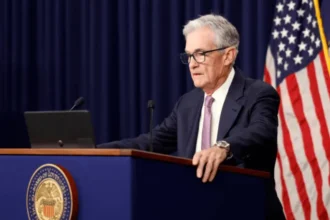Promising stunning scenery, a rich Indigenous legacy, and an energetic history, Canada just started a fresh campaign to draw foreign visitors. Though the tourism industry has not yet recovered to its pre-COVID high, the government believes these attractions will attract more people and revive it. However, several obstacles stand in the way as Canada seeks to increase its attractiveness worldwide: workforce shortages, a disrupted climate, and tense ties to China.
- What Makes Canada's Nature, Indigenous Culture, and History So Appealing?
- What Are Canada's Ambitious Goals for Tourism Growth by 2030?
- How Are Wildfires Impacting Jasper's Tourism Infrastructure?
- Why Has There Been a Decline in Chinese Visitors?
- How Is Canada Adapting to Climate and Workforce Challenges?
- What's Being Done to Address Workforce Shortages in the Tourism Sector?
- What Lies Ahead for Canada's Tourism Sector?
What Makes Canada's Nature, Indigenous Culture, and History So Appealing?
Jack Rivers, an Indigenous tour guide who takes instructive hikes throughout Wikwemikong Unceded Territory on Manitoulin Island, Ontario, says, “You can learn about nature, Indigenous culture, and our history.” Nestled on Lake Huron’s rocky coast, Wiikwemkoong is a pristine location rich in cultural value with thick trees. Mr. Rivers’ tours are part of Wikwemikong Tourism, an Indigenous travel agency bringing guests to local areas and the Native history of Canada.
Rivers says, proud, “It’s a great job.” He does admit, though, that the responsibility is not for everyone. “This is not an 8-4 job; it depends on people working weekends and away from their family,” he says. These challenging circumstances cause Wikwemikong Tourism to have a personnel shortfall—an issue observed in the tourism industry throughout Canada, trying to fill hundreds of thousands of available positions. Dealing with this labor shortage will be crucial as Canada works to boost visitor counts.
What Are Canada's Ambitious Goals for Tourism Growth by 2030?
Under the direction of Destination Canada, the campaign seeks to return to and even surpass the 22 million visitors from 2019, which dropped to 18.3 million last year—a 17% decline. Under the A World of Opportunity plan, the government wants yearly tourism income from CA$109 billion the previous year to rise to CA$160 billion (US$116 billion, £89 billion) by 2030. Rising from its present 13th ranking, Canada wants to be the seventh most visited nation in the world.
Even as Canada emphasizes development, towns suffer from recent climatic issues, mainly the popular tourist destination Jasper, Alberta, which lies more than 3,000 kilometers (1,864 miles) west of Manitoulin Island.
How Are Wildfires Impacting Jasper's Tourism Infrastructure?
Reportedly “the biggest in the region for a century,” Jasper’s July wildfire damaged a third of the town’s buildings. Maligne Lodge, a well-known hotel that had been open since the 1960s, was among the ruined buildings. The lodge’s owner, Karyn Decore, said the fire was “devastating.” With insurance in place, she intends to rebuild by next summer.
She says, “There is a lot to do, but I try to focus on what I have to do today and leave tomorrow.” While Maligne Lodge has an obvious road to recovery, many other hotels are left in doubt, and the schedule for Jasper’s complete recovery is yet unknown.
“Jasper is an international tourist destination; the hotels here are booked 100% between 1 June and the middle of October,” Decore notes. “We already have next summer sold out. The difficulty is that we have no idea how long it will take, and not as many people will be able to visit Jasper until all the hotels are rebuilt.
Why Has There Been a Decline in Chinese Visitors?
Another challenge for the Canadian travel industry is a dramatic drop in Chinese tourists. 2018 saw harsh relations between the two nations after Canada arrested the chief financial officer of Chinese telecom behemoth Huawei on a U.S. warrant, so holding two Canadians on espionage grounds. Though tensions still exist, the three were finally set free in 2021.
Some observers blame China’s failure to reinstate Canada on its list of permitted travel locations for Chinese people mainly because of this diplomatic issue. “The freeze in bilateral relations [between China and Canada] still hasn’t recovered,” analysts remark.
The difficulties go beyond politics since airlines from China deal with logistical problems. The continuing Russia-Ukraine war influences flight schedules and prevents Western airlines from using Russian airspace. One source notes that many North American and European carriers have indeed battled routes to China since they cannot fly across Russia or over Russia. “Avoiding Russia adds about three hours to the flight time, making it more expensive for airlines and onerous for passengers.”
How Is Canada Adapting to Climate and Workforce Challenges?
Soraya Martinez Ferrada, Canada’s Tourism Minister, leads government initiatives to strengthen the industry. She emphasizes the objectives of drawing visitors to Canada to not only come but also “stay longer” and “spend more money.”
Regarding the decline in Chinese visitors, Martinez Ferrada responds that China’s main markets are Europe and the United States, so the emphasis is on them. She is hopeful: “With Chinese visitors, we see that Canada is still of interest to them.”
Dealing with the effects of climate change is one of the government’s long-term goals; Martinez Ferrada notes that this poses an existential threat to Canadian travel. Although wildfires have harmed some areas, she underlines that “it’s not the whole country that’s on fire.” She says, “We have to make sure travelers understand that there might be threats around climate change, but there are so many other places to discover that aren’t impacted.”
What's Being Done to Address Workforce Shortages in the Tourism Sector?
The lack of employees in the Canadian tourism sector presents a significant obstacle; Wikwemikong Tourism is only one of many businesses affected by these personnel shortages. Martinez Ferrada notes that the success of the new tourism plan depends critically on the hiring and keeping of staff. She underlines the need for training programs and says, “I do think that we need to do a better job of promoting the sector and the career opportunities that we have.”
She says, indicating the government’s dedication to producing a qualified workforce capable of sustaining the expansion of the tourism industry, “having the skills and having the training to do that, I think it’s important.”
What Lies Ahead for Canada's Tourism Sector?
Under challenging circumstances, Canada’s A World of Opportunity project aims to revive and grow the travel industry. Canada wants to be a top global destination again by investing in workforce development, stressing various attractions, and negotiating diplomatic and logistical challenges. Using strategic planning and resilience, the tourism sector hopes to reach its ambitious targets, attracting millions of tourists and maintaining a dynamic, sustainable sector highlighting the finest of Canada’s natural and cultural legacy.







